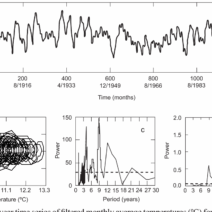The climate in Paris, France, is a captivating amalgamation of various weather patterns that can enchant as much as it can perplex. This city, often celebrated for its romance and artistic heritage, showcases a climate that significantly influences the lifestyle, culture, and daily activities of its inhabitants. Understanding the climate in Paris is paramount, especially for those who wish to experience its splendor in all seasons.
Located in north-central France, Paris experiences a temperate oceanic climate, characterized by mild summers and cool winters. This region’s weather is predominantly influenced by the North Atlantic Ocean, imparting a degree of humidity and contributing to the city’s unpredictable weather conditions. This climatic nature invariably sets the backdrop for romantic strolls along the Seine or invigorating afternoons in the picturesque gardens.
In Paris, seasonal transitions play a vital role, with each season presenting its own unique charm and character. Spring, spanning from March to May, invigorates the city with a burst of vitality. As the days lengthen and the temperatures gradually rise, Parisians emerge from the confines of winter to revel in the blossoming flora. Average temperatures during spring oscillate between 10°C (50°F) and 20°C (68°F), making it an exhilarating time for outdoor activities. Rainfall, though not uncommon, tends to be sporadic, often serving as a refreshing interlude rather than a deterrent.
Summer invokes an atmosphere filled with vibrant energy, particularly from June through August. With average temperatures ranging from 17°C (63°F) to 25°C (77°F), this is when Paris truly comes to life. Outdoor cafés brim with patrons, and al fresco dining becomes a norm. However, the summer months can also bring sporadic heatwaves, when the mercury can soar above 30°C (86°F). These sultry days can be accompanied by brief but intense rain showers, which contribute to the humidity levels, an aspect often overlooked by tourists. The melange of sunshine and rainfall creates a particularly lush and verdant landscape, painting the city in a myriad of hues.
As Paris transitions into autumn, from September to November, the city’s ambiance takes on a contemplative quality. Average temperatures begin to dip, generally ranging from 11°C (52°F) to 20°C (68°F). The autumn months produce a palette of golden foliage, which beautifully adorns the city’s parks. Rain becomes more frequent during this time, with October often recognized for its drizzle. Parisians outfit themselves in cozy scarves and jackets, perfectly encapsulating the essence of the season—a time for intimate gatherings and reflection.
Winter envelops Paris from December to February, casting a serene facet upon the city. While snowfall is relatively rare, the beauty of snow-kissed rooftops and twinkling lights creates an enchanting atmosphere. Average winter temperatures hover around 3°C (37°F) to 7°C (45°F). Rainfall persists, yet it is often met with the charm of crisp air and shorter days. The winter months foster a distinct sense of tranquility, inviting both locals and tourists to savor hot drinks in snug cafés or embark on leisurely strolls through the illuminated streets.
One cannot discuss the climate in Paris without mentioning its integral relationship with rainfall. Paris experiences an average annual precipitation of about 640 millimeters (25 inches), with rain distributed fairly evenly throughout the year. While many envision Paris basking in endless sunshine, it is essential to acknowledge that this city also endures its fair share of gloomy days. Rain can be both a nuisance and a blessing, nourishing the charming landscapes and lending a sense of romance to the city. The sporadic rainy days create an ambiance that inspires creativity, often prompting spontaneous visits to museums or intimate conversations under umbrellas.
Humidity levels in Paris are relatively moderate, contributing to the overall comfort of the climate. Summers can feel somewhat sticky, yet the city’s extensive network of trees and parks provides respite from the harsher effects of urban humidity. Parisians have adeptly adapted to their climate, embracing the rainy days as part of the city’s character. The phrase “Il pleut, il pleut, bergère” (It rains, it rains, shepherdess) echoes through cafés during these times, illustrating how the city’s inhabitants have learned to find joy in the rain.
The climatic patterns in Paris don’t just influence the day-to-day experience; they also have ramifications on the broader environmental context. Urbanization and climate change pose significant challenges for the city. As global warming progresses, Paris faces the threat of heatwaves becoming more common and intense. The consequential effects on public health and the urban ecosystem compel a response from city planners and environmental activists alike. Strategies such as increasing green spaces, enhancing urban biodiversity, and promoting sustainable practices are vital to mitigating the repercussions of climate change.
In conclusion, the climate in Paris embodies a multifaceted narrative woven into the fabric of the city itself. From the gentle mists of spring to the radiant days of summer, the golden hues of autumn, and the tranquil embrace of winter, each season offers a unique perspective on life in the City of Light. Rain accompanies the enchantment, infusing the air with a sense of freshness and an almost poetic quality. While the beauty of Paris can sometimes be obscured by clouds, it is this very contrast that enhances its allure, making it a destination that continues to draw admirers from around the globe. A true understanding of Parisian weather transcends mere statistics; it is an invitation to engage with a city that dances gracefully between rain and sunshine, both romantically and realistically.







